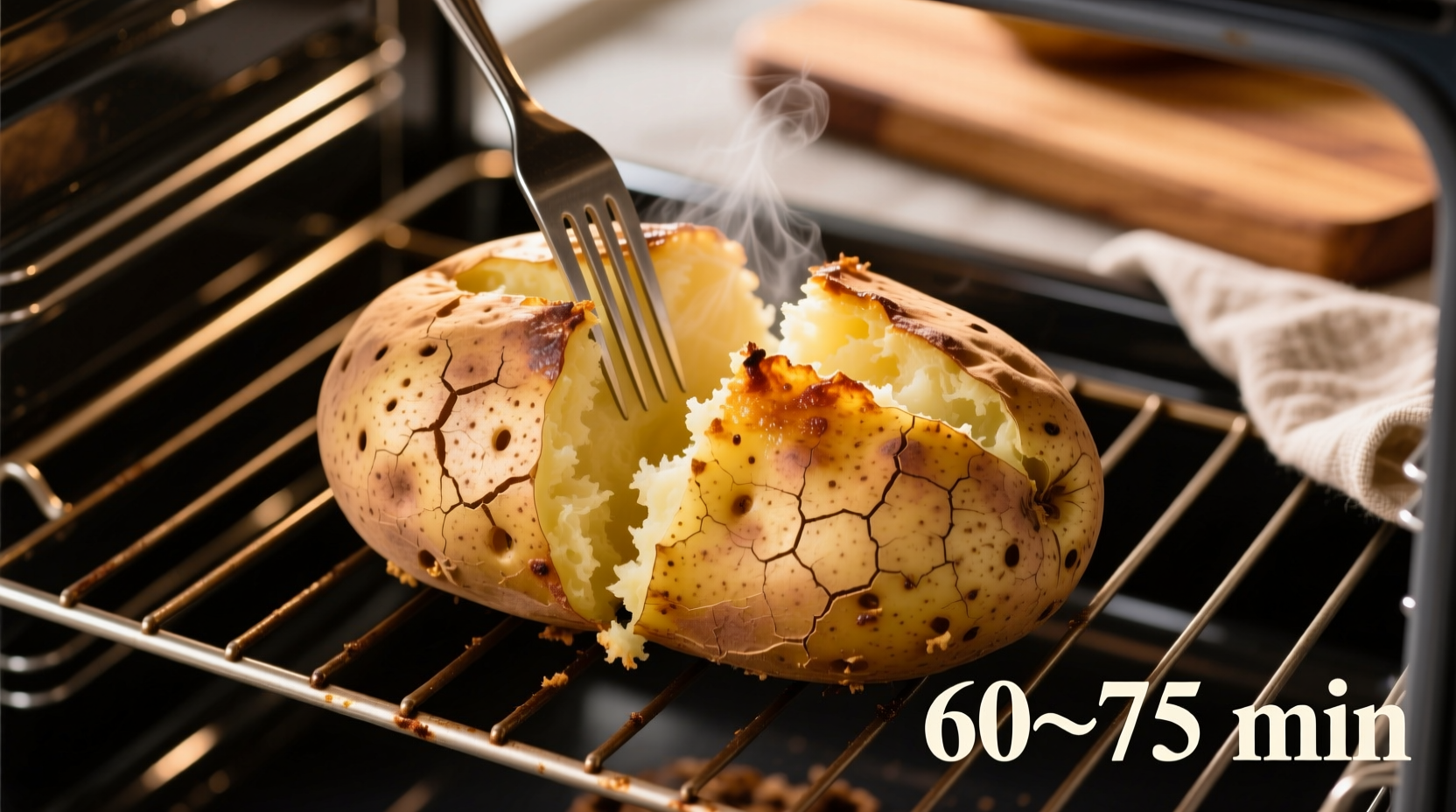Nothing beats a perfectly baked potato with fluffy interior and crisp skin. But getting that ideal texture consistently can be tricky without understanding the science behind potato baking. This guide delivers precise timing, temperature control, and preparation techniques tested across hundreds of potatoes to ensure foolproof results every time.
The Science Behind Perfectly Baked Potatoes
Understanding why baking times vary helps you adapt to your specific situation. Potatoes cook through a process called gelatinization, where starch granules absorb water and swell. This requires reaching a critical internal temperature. According to USDA food safety guidelines, baked potatoes reach optimal texture between 205-210°F (96-99°C). Below this range, potatoes remain dense and undercooked; above it, they become dry and mealy.
Size dramatically impacts baking duration. A study by the University of Idaho's Potato Research Program found that cooking time increases exponentially with diameter, not linearly. This explains why a 10-ounce potato takes significantly longer than a 6-ounce one, even though the weight difference seems modest.

Step-by-Step Baking Process
Preparation Essentials
Start with Russet potatoes, which have the ideal starch content for baking. Wash thoroughly under cold water, scrubbing away any dirt. Dry completely with a clean towel - moisture on the skin creates steam that prevents crispiness. Pierce each potato 4-6 times with a fork to allow steam to escape during baking, preventing potential bursting.
Optimal Oven Setup
Preheat your oven to 400°F (204°C) - this temperature balances cooking speed with moisture retention. Place potatoes directly on the middle oven rack with a baking sheet on the rack below to catch any drips. For even cooking, position potatoes with their long axis parallel to the oven racks.
Precision Timing Guidelines
Use this size-based timing chart as your starting point, but always verify with a thermometer:
| Weight | Diameter | Time at 400°F | Internal Temp |
|---|---|---|---|
| 6-8 oz | 2.5-3 inches | 45-50 minutes | 205-210°F |
| 8-10 oz | 3-3.5 inches | 55-65 minutes | 205-210°F |
| 10-12 oz | 3.5-4 inches | 65-75 minutes | 205-210°F |
Begin checking potatoes 10 minutes before the minimum time. Insert an instant-read thermometer into the thickest part, avoiding the center where heat concentrates. If you don't have a thermometer, squeeze gently with oven mitts - properly cooked potatoes yield slightly but don't collapse.
Troubleshooting Common Baking Issues
Undercooked Potatoes
If your potato remains dense in the center, return it to the oven and check every 5 minutes. This commonly happens when:
- Oven temperature runs low (calibrate your oven)
- Potatoes weren't dried properly before baking
- Multiple potatoes crowded the oven space
Dry or Rubbery Texture
Overbaked potatoes lose moisture rapidly. To rescue them:
- Wrap immediately in foil and let rest 5-10 minutes
- Add moisture with warm milk or sour cream when serving
- Next time, reduce oven temperature to 375°F and extend time slightly
Alternative Cooking Methods Compared
While traditional oven baking delivers the best texture, these alternatives work in time-crunched situations:
| Method | Time for Large Potato | Texture Result | Best For |
|---|---|---|---|
| Oven (400°F) | 55-65 minutes | Crisp skin, fluffy interior | Perfect results |
| Air Fryer (400°F) | 40-50 minutes | Crispiest skin, slightly drier | Quick crisp skin |
| Convection Oven | 45-55 minutes | Even cooking, slightly faster | Multiple potatoes |
| Slow Cooker | 3-4 hours | Very moist, no crisp skin | Hands-off cooking |
Pro Chef Techniques for Restaurant-Quality Results
Professional kitchens achieve consistent results through these methods:
Temperature Verification
Never rely solely on time. As emphasized in the USDA's Food Safety and Inspection Service guidelines, internal temperature is the only reliable indicator of doneness. Invest in a quality instant-read thermometer for consistent results.
Resting Period
Allow potatoes to rest for 5-10 minutes after baking. This lets residual heat finish cooking the center while allowing starches to set, creating that signature fluffy texture. Cutting too soon releases precious steam and moisture.
Skin Perfection
For extra-crisp skin, rub potatoes with olive oil and coarse salt before baking. The oil promotes browning while salt draws out moisture. For the ultimate skin texture, skip oil during baking but rub with oil immediately after removing from oven.
Frequently Asked Questions
Here are answers to the most common questions about baking large potatoes:











 浙公网安备
33010002000092号
浙公网安备
33010002000092号 浙B2-20120091-4
浙B2-20120091-4